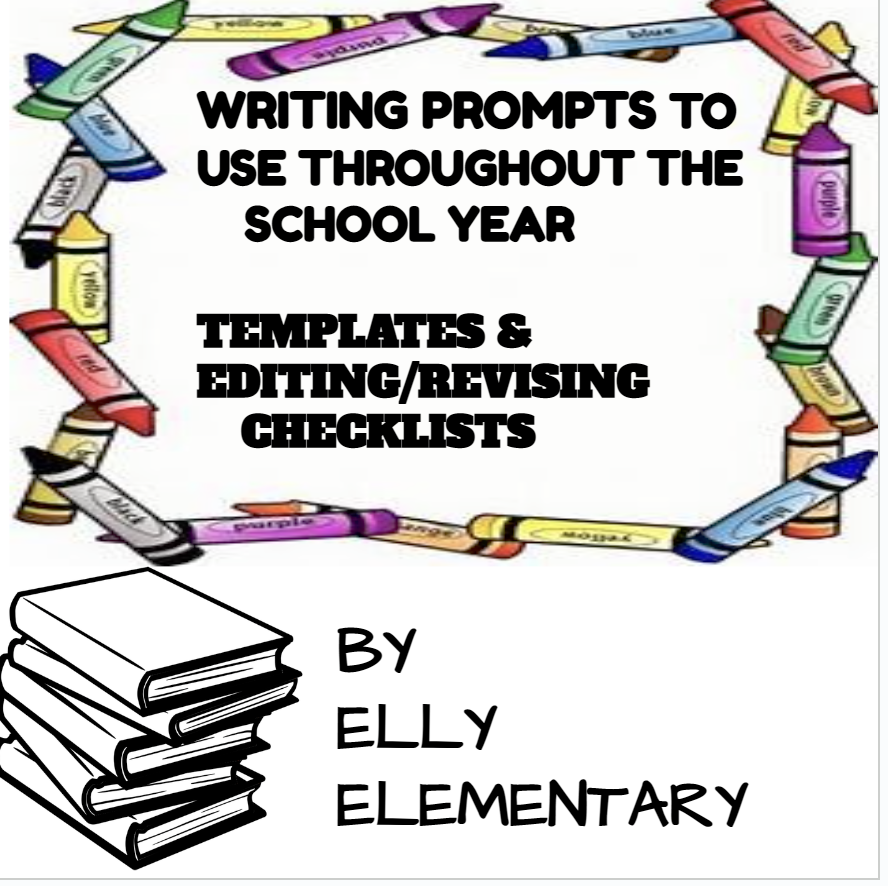Writer’s Workshop in the Elementary Classroom: How to Set It Up and Why It Matters
Writing is one of the most powerful tools we can give children. It allows them to communicate their ideas, express their emotions, think critically, and build connections with others. Yet, for many students, writing can feel intimidating, overly structured, or disconnected from their personal experiences. That’s where the Writer’s Workshop model comes in.
In elementary classrooms across the country, Writer’s Workshop has become a cornerstone of literacy instruction. It transforms writing from a rigid task into an engaging, student-centered process that helps young learners see themselves as real authors. This approach not only builds strong writing skills but also nurtures creativity, confidence, and independence.
This article will explore what Writer’s Workshop is, why it is so important for children, and how teachers can set it up successfully in their classrooms.
What Is Writer’s Workshop?
Writer’s Workshop is an instructional framework that gives students time, choice, and structure to grow as writers. It mirrors the practices of professional writers while breaking the process down into manageable steps for children.
At its core, Writer’s Workshop usually includes three main components:
- Mini-Lesson (5–15 minutes): The teacher provides explicit instruction on a writing strategy, skill, or concept. This could include lessons on using descriptive words, organizing a narrative, or revising for clarity.
- Independent Writing Time (20–40 minutes): Students work on self-selected writing pieces while applying what they’ve learned. During this time, the teacher conferences individually or with small groups to provide feedback and support.
- Sharing (5–10 minutes): Students share their work with peers or the class. This celebration of writing helps build a community of writers and encourages authentic feedback.
This cycle repeats daily, allowing students to engage in ongoing writing projects while steadily learning new strategies. Over time, they build stamina, independence, and pride in their work.
Why Writer’s Workshop Matters
1. It Builds Writing Stamina
Writing is like exercise—the more students do it, the stronger they get. Writer’s Workshop gives children daily, consistent practice. Over weeks and months, they learn to write for longer stretches without losing focus, an essential skill for both academic and real-world success.
2. It Encourages Student Voice and Choice
In many traditional writing programs, all students write the same prompt at the same time. While this structure has its place, it can stifle creativity and disengage reluctant writers. Writer’s Workshop, by contrast, encourages students to choose their own topics. A student might write about their soccer game, a pet, or a made-up adventure. This freedom motivates them to write because they are invested in the subject.
3. It Mirrors Real-World Writing
Professional authors don’t just sit down and write perfect stories in one sitting. They brainstorm, draft, revise, edit, and publish. Writer’s Workshop exposes students to this authentic process, teaching them that good writing takes time and revision. They begin to see themselves not just as students completing assignments, but as real writers.
4. It Builds a Community of Writers
Sharing writing builds confidence and helps students learn to give and receive feedback. They discover that writing is not a solitary act but part of a community of thinkers and storytellers. This classroom culture fosters respect, empathy, and collaboration.
5. It Supports Differentiation
Because students work at their own pace and on their own pieces, Writer’s Workshop naturally supports differentiated instruction. Struggling writers can focus on basic sentence structure while advanced writers experiment with voice and figurative language. Teachers can meet students where they are during conferences and help them progress.
Setting Up Writer’s Workshop in the Elementary Classroom
Establishing Writer’s Workshop takes intentional planning and structure. Below are the key steps to set it up successfully.
1. Create a Writing-Friendly Environment
The physical classroom space should invite students to write. Consider:
- Writing supplies: Stock the classroom with sharpened pencils, erasers, paper, and writing notebooks.
- Anchor charts: Display visual reminders of writing strategies, word walls, and checklists.
- Author’s chair: Dedicate a special chair or space where students can share their work during the “sharing” portion.
- Publishing area: Provide a place for finished pieces to be displayed, bound into class books, or stored for future celebration.
When students feel like writing is valued in their classroom, they are more eager to engage.
2. Establish Routines and Expectations
Consistency is key to Writer’s Workshop. From the first week of school, introduce clear routines:
- Where to keep writing materials (e.g., in a writer’s folder or notebook).
- What to do when they feel “stuck” (reread, sketch, or add details).
- How to transition from mini-lesson to independent writing.
- How to behave during conferences (quiet, respectful, independent work time).
Practice these routines until they become automatic. When students know what is expected, the workshop runs smoothly and productively.

3. Start with Mini-Lessons
Mini-lessons are short, focused, and practical. Each should have a clear teaching point students can immediately apply. Examples include:
- Narrative writing: How to “zoom in” on one small moment instead of telling everything.
- Opinion writing: Using transition words like because, for example, in conclusion.
- Informational writing: Organizing facts with headings and subheadings.
- Revision strategies: Adding dialogue, stronger verbs, or more detail.
Mini-lessons should follow the “I do, we do, you do” format: the teacher models the skill, practices it with the class, then invites students to apply it in their own writing.
4. Build in Independent Writing Time
The heart of Writer’s Workshop is independent writing. Students need extended, uninterrupted time to explore their ideas. During this period, teachers circulate to:
- Conference individually: Ask students about their writing, give feedback, and set small goals.
- Work with small groups: Provide targeted instruction for common needs, such as paragraphing or adding detail.
- Encourage independence: Remind students that they are responsible for their writing and choices.
Independent writing time also allows students to experience the joy of “flow”—getting lost in their own story or ideas.
5. Incorporate Sharing and Celebration
The final part of the workshop is sharing. Students can:
- Read aloud to the whole class from the author’s chair.
- Share with a partner in a “turn-and-talk.”
- Display writing on bulletin boards or in class anthologies.
These celebrations make writing authentic. When students know their work will be read and appreciated, they take greater pride in it.

6. Teach the Writing Process
Writer’s Workshop helps students internalize the stages of writing:
- Prewriting: Brainstorming, sketching, or organizing ideas.
- Drafting: Getting ideas down on paper without worrying about perfection.
- Revising: Adding, changing, or rearranging to make the writing clearer or more interesting.
- Editing: Checking spelling, punctuation, and grammar.
- Publishing: Sharing the final product with an audience.
By cycling through these stages repeatedly, students learn that writing is not about getting it “right” the first time—it is about improving over time.
Overcoming Common Challenges
Challenge 1: Students Who Say “I Don’t Know What to Write”
Solution: Build a bank of ideas with students, such as writing about a memory, a favorite place, or a “small moment.” Provide prompts, but always allow choice.
Challenge 2: Managing a Large Group During Independent Writing
Solution: Establish routines for noise level, movement, and what to do if students need help while the teacher is conferencing.
Challenge 3: Limited Time
Solution: Even a 30-minute daily workshop can be powerful if it is consistent. The key is prioritizing writing as an essential part of the literacy block.
Why Writer’s Workshop Builds Lifelong Writers
The ultimate goal of Writer’s Workshop is not just to prepare students for standardized tests or classroom assignments—it is to help them see writing as a lifelong tool for communication and self-expression.
Children who grow up in classrooms that use Writer’s Workshop often leave with:
- Confidence: They see themselves as capable writers with something valuable to say.
- Creativity: They understand writing is not just rules, but imagination and storytelling.
- Independence: They know how to plan, revise, and publish their own work.
- Community: They experience writing as a way to connect with others.
In an age where communication skills are more important than ever, Writer’s Workshop gives students the foundation they need to thrive in school and beyond.
Final Thoughts
Setting up Writer’s Workshop in the elementary classroom requires thoughtful planning, patience, and consistency. But the rewards are immense. By creating a structured yet flexible environment, giving students choice and voice, and celebrating their efforts, teachers help children grow into confident, capable, and joyful writers.
As Lucy Calkins, one of the pioneers of the Writer’s Workshop model, once said: “Children long to be authors—not someday, but today. They want to see themselves as writers now.”

When teachers embrace Writer’s Workshop, they make that vision a reality.
Check out my store, Elly Elementary, and get ready for the next school year for all your K-5th grade curriculum needs. I have resources for many of your beginning of year curriculum areas that your class will love. Also, plan for the start of the school year and enjoy yourr summer !!!
Join me on Facebook and Instagram. Let me know if you are looking for anything in particular. (Email: ellyelementary@gmail.com)
SAVE 20% ON ALL RESOURCES FROM NOW UNTIL 9/4 WITH COUPON CODE IS BACK2SCHOOL20.



Comments ()